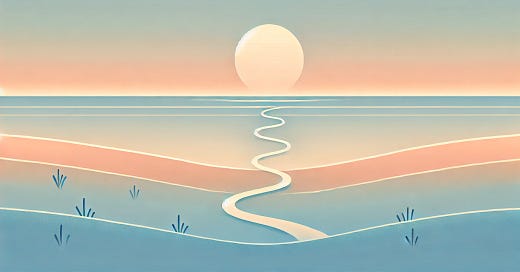The discipline of product design often demands an intricate balance between articulating a compelling vision and allowing for inevitable evolution.
Andrei Herasimchuk, a luminary of design at large, elaborates on the qualities that distinguish the best designers. His insights resonate deeply with the challenges we navigate in the profession, and they merit thoughtful examination.
Calibrating the Narrative of Design
A hallmark of exceptional designers is their capacity to convey “just enough” of the narrative. Master designers discern how much to unveil to captivate their audience—be it clients, stakeholders, or collaborators—without committing prematurely to an immutable blueprint.
Over-embellishing a vision can cultivate expectations that become untenable when project variables shift, as they invariably do. Andrei’s principle is precise: “A good designer knows when to show enough and tell enough, and when to stop.” This nuanced approach involves portraying possibilities—“what could be” rather than “what will be”—and maintaining adaptability.
Embracing Dynamism in the Design Process
The inevitability of change is a cornerstone of the design journey. Projects that are rigidly tethered to initial concepts frequently fail to address emergent complexities or evolving user needs. Andrei’s pragmatic stance reframes these shifts as opportunities for refinement rather than impediments.
By maintaining presentation flexibility, designers establish a foundation robust enough to inspire confidence while remaining pliable enough to adapt. This approach eschews rigidity, which stifles innovation and responsiveness.
Elevating Storytelling to a Strategic Competency
Beyond crafting visually compelling work, designers must effectively communicate its potential. This is not an exercise in overpromising but in facilitating a shared vision.
Opportunities to present designs to teams or stakeholders serve as crucibles for refining this skill. Through iterative practice and feedback, designers develop the ability to balance inspirational narratives with pragmatic foresight—a capability indispensable to professional growth.
Cultivating Resilience in the Face of Critique
Design's tangible and visceral nature invites widespread scrutiny, often fraught with subjectivity. Unlike engineering—where performance is objectively quantifiable—design elicits deeply personal reactions. Andrei advocates cultivating resilience: “Yeah, it’ll be better later. I’ll keep iterating.”
This mindset reframes criticism as an integral component of the iterative process rather than a judgment of one’s abilities. A thick skin enables designers to remain focused on progression and improvement, irrespective of initial reception.
Valuing Diverse Perspectives
Exceptional designers recognize feedback as a vehicle for insight. While not all critiques warrant implementation, each provides an alternative perspective that can refine the work. Respecting diverse opinions fosters collaboration and strengthens the result, even when those opinions diverge from one’s initial vision.
Iteration as a Fundamental Principle
Expecting perfection in the first iteration is unrealistic and counterproductive. Iteration allows for exploration, validation, and refinement, transforming initial concepts into robust solutions.
Embracing iteration mitigates the emotional weight of critique and redirects focus toward the cumulative improvement of the work. This iterative mindset is not merely a strategy but a requisite for success.
Experiential Learning: The Crucible of Mastery
Certain proficiencies cannot be cultivated solely in academic settings. The ability to balance narrative precision and adaptability emerges through experience. Presenting to sceptical stakeholders or navigating unforeseen challenges compels designers to hone this delicate equilibrium.
Design as a Balancing Act
At its essence, Andrei’s philosophy emphasizes that great design is an exercise in balance. It involves inspiring stakeholders with a vision while remaining open to evolution. It necessitates confidence tempered by humility and the ability to inspire imagination without constraining future possibilities.
These insights resonate profoundly because they illuminate that design is as much about human interaction as it is about technical execution. The process's messy, iterative, and collaborative nature makes it both challenging and deeply fulfilling.
Next time you present your work, consider whether you are telling just enough of the story and allowing for iteration and change. Mastering this balance elevates your designs and your capacity to navigate the complexities of the craft.
How have you approached balancing narrative clarity and adaptability in your designs? I invite you to share your experiences and insights in the comments or on social media. Let’s continue this dialogue.



